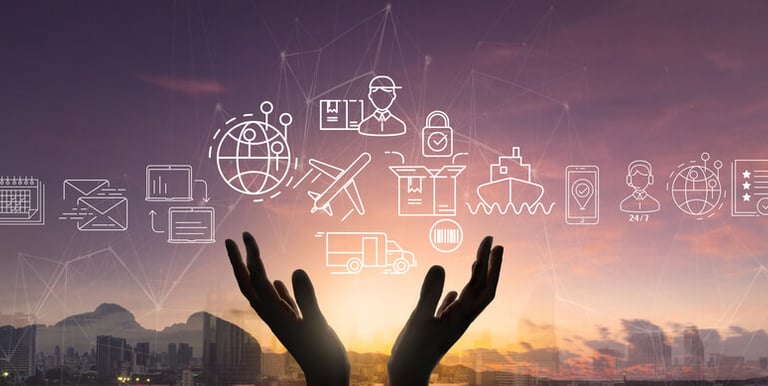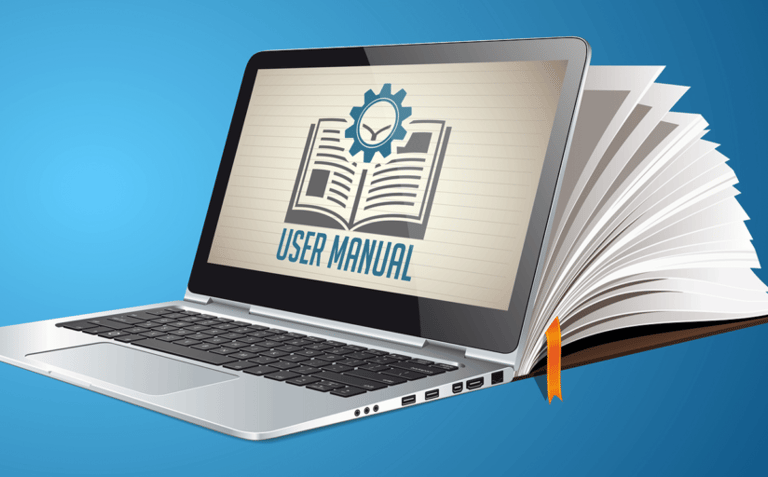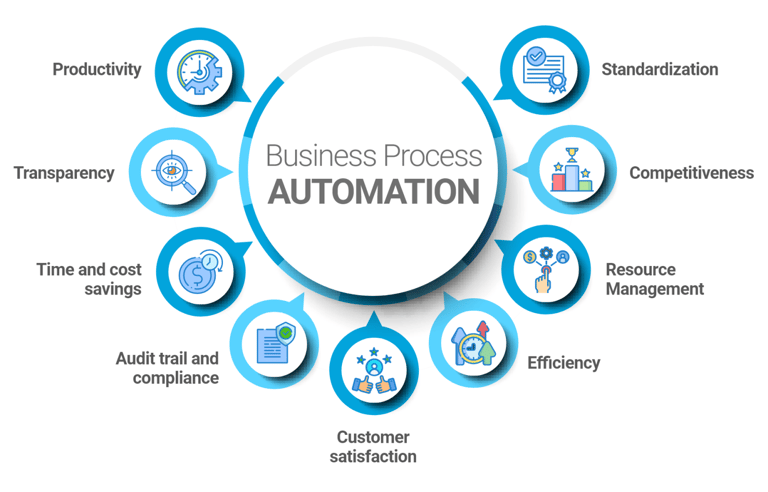Communication & Technology
“Artificial intelligence and generative AI may be the most important technology of any lifetime.” Marc Benioff
AI Tools for Communication Professionals:
Content Creation and Optimization:
ChatGPT: For generating first drafts of content like press releases, social media posts, and email campaigns. It can also be used for brainstorming and research.
Jasper: A generative AI platform for writing and marketing, offering tools for brand messaging and creative briefs.
Grammarly: Helps with writing and editing content, improving clarity and accuracy.
Hypotenuse AI: A press release writing tool.
CopyLeaks: For detecting plagiarism and AI writing.
DeepL: For translating content.
Canva: For creating visuals.
Wordtune: Helps refine and optimize content.
Outreach and Media Relations:
Pitchbox, Respona, and PressPal.ai: Tools for automating outreach, managing media relationships, and enhancing personalized communication with journalists and influencers.
Social Media Management:
Hootsuite, Buffer, Sprout Social: Streamline social media scheduling, engagement, and performance tracking.
Media Monitoring and Analysis:
Cision Comms Cloud, Meltwater, Mention, and Talkwalker: Track brand mentions, sentiment analysis, and media trends.
Crisis Communication:
Talkwalker: Offers robust crisis communication features, including advanced AI capabilities for finding brand mentions.
Internal Communications:
Synthesia: A text-to-video tool that can turn text messages into engaging video clips.
Jasper: Can be used for creating effective employee communications.
Poised: Offers real-time feedback during online meetings to improve communication skills.
Virtual Assistants and Chatbots:
ChatGPT, Bard, and Co-Pilot provide conversational AI for various tasks, from answering questions to assisting with problem-solving.
Customer Relationship Management (CRM):
Zoho CRM: An AI-powered platform for streamlining sales, marketing, and support processes.
Salesforce Einstein: Integrates AI into the Salesforce platform to boost productivity and improve customer communications.
The landscape of professional communication has undergone a revolutionary transformation with the emergence of artificial intelligence technologies that are fundamentally reshaping how organizations create content, manage relationships, and engage with their audiences. These sophisticated AI-powered tools represent more than just technological conveniences—they serve as strategic multipliers that enhance human creativity, streamline complex workflows, and provide unprecedented insights into communication effectiveness across multiple channels and platforms. From content generation and optimization to crisis management and media monitoring, AI communication tools are empowering professionals to work more efficiently while maintaining the personal touch and strategic thinking that define exceptional communication practice. The integration of these technologies into daily workflows enables communication professionals to focus on high-level strategy and relationship building while automated systems handle routine tasks, data analysis, and performance tracking with remarkable precision and speed.
This technological evolution represents not just an upgrade to existing processes but a fundamental shift toward more intelligent, responsive, and effective communication strategies that can adapt to rapidly changing digital landscapes and increasingly sophisticated audience expectations. AI tools are transforming communication by automating tasks, enhancing content creation, and providing valuable insights. Popular tools include ChatGPT for content generation, Google Gemini for real-time information, and Midjourney for visual content. AI also powers chatbots, virtual assistants, and communication coaches like POISED, which offers real-time feedback on online meetings.


Whether through intelligent writing assistants that help craft compelling narratives, advanced analytics platforms that decode audience sentiment in real-time, or sophisticated chatbots that maintain consistent brand voice across customer interactions, AI tools are creating new possibilities for personalized, data-driven communication at scale.
AI's Future in Communication
“Some people call this artificial intelligence, but the reality is this technology will enhance us. I think we’ll augment our intelligence.” Ginni Rometty
The key to understanding AI's future in communication is recognizing its role not as a replacement for human interaction but as a supplement. By automating routine tasks and offering real-time insights, AI can free up humans to engage in more meaningful, creative, and emotional exchanges. In today's rapidly evolving tasks and technology-driven world, workplace communication is undergoing significant changes. With the increasing reliance on digital platforms and remote work arrangements, the future of workplace communication is poised for a major transformation. One of the key trends shaping the future of workplace communication is the rise of virtual communication tools. Platforms like Slack, Microsoft Teams, and Zoom have become essential for facilitating remote collaboration and maintaining team cohesion in distributed work environments. These tools offer a range of features, from instant messaging and video conferencing to document sharing and project management, which enable seamless communication regardless of physical location. As organizations continue to embrace remote work options, these virtual communication tools will become even more integral to the way work gets done.
Another important aspect of the future of workplace communication is the increasing emphasis on transparency and authenticity. In an age of information overload and social media scrutiny, employees and consumers alike are demanding greater openness and honesty from companies. This shift towards transparency is reshaping internal communication practices, with organizations striving to keep employees informed and engaged through clear and honest communication. Leaders who can effectively communicate with authenticity and credibility will be best positioned to inspire trust and loyalty among their teams.
In addition, workplace communication will see a greater integration of artificial intelligence (AI) and automation. AI-powered chatbots and virtual assistants are already transforming how employees interact with technology and access information in the workplace. These intelligent systems can help streamline routine tasks, provide real-time assistance, and analyze communication data to identify trends and insights. By leveraging AI in communication processes, organizations can improve efficiency, productivity, and decision-making while also freeing up employees to focus on more strategic and creative tasks. Moreover, the future of workplace communication will necessitate a shift towards more personalized and tailored communication strategies. With the proliferation of data analytics and machine learning technologies, organizations can now collect vast amounts of information about their employees' communication preferences, behaviors, and engagement levels. By leveraging this data to deliver personalized communication experiences, organizations can better engage and motivate employees, foster stronger relationships, and drive better outcomes. This level of customization and personalization will be crucial for organizations to stand out in a crowded and competitive marketplace.
The future of workplace communication is evolving rapidly in response to technological advancements, changing societal norms, and shifting organizational priorities. Communication specialists recognize the importance of staying abreast of these developments and adapting to new communication paradigms. By embracing virtual communication tools, promoting transparency and authenticity, fostering diversity and inclusion, integrating AI and automation, and personalizing communication strategies, organizations can future-proof their communication practices and empower their employees to thrive in the digital age. As we move forward, organizations must prioritize effective communication as a core competency and invest in developing the skills and capabilities needed to navigate the complexities of the evolving communication landscape.


The future of workplace communication will be characterized by a greater emphasis on cultural diversity. As organizations become more globalized and diverse, effective communication across different cultural backgrounds and identities will become essential for fostering collaboration and innovation. This requires not only understanding the nuances of cross-cultural communication but also creating an inclusive and equitable communication environment where all voices are heard and valued. By prioritizing diversity and inclusion in their communication practices, organizations can create a more welcoming and supportive workplace for all employees.
Technology has Profoundly Transformed Communication
“We must not just build AI that is intelligent but also AI that is wise.” – Max Tegmark
Key Aspects of This Revolution include:
Digital Communication Channels: A shift from traditional media to digital forms like email, instant messaging, and social media. Email provided faster business communication, instant messaging apps enabled real-time conversations, and social media allowed for global sharing.
Faster and More Efficient Communication: Technology allows for real-time global connection.
Increased Collaboration and Globalization: Communication technology facilitates global business collaboration and cultural exchange.
New Forms of Interaction: Social media has introduced communication forms like memes, emojis, and hashtags.
Revolutionized the Workplace: Digital tools like Zoom and Microsoft Teams enable remote work and online learning.
Future Trends Shaping Communication Include:
5G Connectivity: Will offer faster speeds and enable the Internet of Things.
Artificial Intelligence (AI): AI-powered tools will enhance customer service and automate tasks.
Augmented and Virtual Reality (AR/VR): These technologies are expected to revolutionize interactions like virtual meetings and education.
Quantum Communication: Promises ultra-secure communication channels.
Overall, technology has profoundly transformed communication, making it faster, more efficient, and more accessible, but also raising concerns about issues such as unequal access to technology and potential misuse of personal information. Over-reliance on digital communication can also affect interpersonal skills. As we navigate this digital communication landscape, the key lies in striking a thoughtful balance that harnesses technology's remarkable capabilities while preserving the human elements that make communication meaningful and authentic. Organizations and individuals must remain vigilant about addressing the digital divide to ensure equitable access to these powerful tools, while also implementing robust privacy protections and digital literacy programs that empower users to communicate safely and effectively. The future of communication will likely depend not on choosing between digital and traditional methods, but on thoughtfully integrating both approaches to create richer, more inclusive interactions that leverage technology's efficiency while maintaining the empathy, nuance, and genuine connection that define truly effective human communication. By approaching technological advancement with intentionality and awareness of its limitations, we can build communication systems that enhance rather than replace our fundamental capacity for understanding and connecting with one another.
When organizations thoughtfully assess their team members' technical capabilities and tailor their communication accordingly, they create an environment where technology serves as a bridge rather than a barrier to effective collaboration. This means providing comprehensive training for complex systems, offering multiple channels for different comfort levels, and ensuring that technological solutions genuinely address real workplace challenges rather than creating unnecessary complexity. Leaders who take the time to understand their employees' diverse technical backgrounds and adapt their approach accordingly often find that technology adoption becomes more natural and sustainable, leading to higher engagement rates and more successful implementation of digital tools across all levels of the organization.
The strategic and mindful embrace of workplace technology represents more than just operational efficiency—it fundamentally reshapes how teams connect, innovate, and achieve their goals together. When businesses move beyond simply acquiring the latest tools to thoughtfully integrating technology that aligns with their culture and objectives, they unlock transformative potential that extends far beyond basic productivity gains. This approach creates workplaces where remote and in-person employees feel equally valued and connected, where data-driven insights inform better decision-making, and where routine tasks are automated to allow human creativity and problem-solving to flourish. Ultimately, organizations that balance technological advancement with human-centered implementation discover that their investment in digital tools becomes a catalyst for building stronger relationships, more dynamic collaboration, and a more resilient, adaptable workforce prepared for the challenges and opportunities of tomorrow's business landscape.


In today's rapidly evolving digital landscape, it is crucial to embrace technological advancements with a sense of responsibility. Organizations and individuals alike must prioritize inclusivity and accessibility in their technological initiatives. By fostering an environment where everyone can participate, we enrich human interaction and create opportunities that benefit society as a whole. As we integrate new technologies into our daily lives, it is imperative to focus on how these innovations can enhance our connections with one another. This approach not only promotes a sense of community but also helps to ensure that no one is left behind in the digital age. By committing to responsible technological practices, we can build a future that is not only advanced but also equitable and supportive for all. Let us work together to champion inclusivity and accessibility as we navigate this transformative journey.
Embrace the potential of technology, but do so with a thoughtful perspective that prioritizes the enrichment of human interaction. Technology has fundamentally changed communication by enabling instant global connections, facilitating various forms of interaction, and impacting how relationships are formed and maintained. This transformation is evident in the rise of social media, messaging apps, video conferencing, and email, which have made communication faster, more accessible, and more diverse.
The integration of these technological advances has created a more dynamic and responsive work environment where innovation flourishes through enhanced collaboration and knowledge sharing. Cross-functional teams can now work together more effectively than ever before, leveraging collaborative platforms that allow for real-time brainstorming, instant feedback, and seamless integration of diverse expertise regardless of geographical boundaries. Cloud-based ecosystems enable organizations to scale their operations rapidly, adapt to changing market conditions, and access specialized tools and resources that were previously available only to large corporations. This democratization of technology has leveled the playing field for smaller businesses and startups, allowing them to compete more effectively while fostering an entrepreneurial spirit that drives continuous improvement and creative problem-solving. Furthermore, the availability of sophisticated communication tools has enhanced customer service capabilities, enabling businesses to provide more personalized and responsive support while building stronger relationships with their clients and stakeholders.
Perhaps most significantly, this technological transformation has fundamentally altered the nature of work itself, shifting the focus from repetitive task completion to higher-order thinking, strategic planning, and creative problem-solving. Employees are increasingly empowered to make data-driven decisions, pursue innovative solutions, and contribute meaningfully to their organizations' growth and success. The modern workplace rewards adaptability, continuous learning, and technological fluency, creating career paths that are more diverse and fulfilling than traditional hierarchical structures. Digital wellness tools and flexible work arrangements have also contributed to improved employee satisfaction and retention, as workers can better balance their professional responsibilities with personal well-being. This evolution has created a workforce that is not only more productive and efficient but also more engaged, creative, and resilient in the face of rapid change, positioning organizations to thrive in an increasingly competitive and dynamic global marketplace.
While technology has made communication faster, more efficient, and globally accessible, it's crucial to embrace these advancements responsibly by ensuring inclusivity, maintaining accessibility, and prioritizing the enrichment of genuine human connection rather than replacing it entirely.
Technology has revolutionized communication, changing how people connect, collaborate, and share information. This has fundamentally transformed how we communicate, shifting from traditional media to digital channels such as email, instant messaging, and social media that enable real-time global connections and unprecedented collaboration. This revolution has introduced new forms of interaction through memes, emojis, and hashtags while revolutionizing workplaces with tools like Zoom and Microsoft Teams that facilitate remote work and online learning. Looking ahead, emerging technologies like 5G connectivity, artificial intelligence, augmented and virtual reality, and quantum communication promise to further enhance communication speed, security, and immersive experiences. However, this transformation brings significant challenges, including the digital divide that creates unequal access to technology, privacy and data security concerns regarding personal information misuse, and the risk of digital distractions reducing face-to-face interactions and interpersonal skills.
Transformative Technologies
“Nobody phrases it this way, but I think that artificial intelligence is almost a humanities discipline. An attempt to understand human intelligence and human cognition". Sebastian Thrun
Artificial intelligence has emerged as one of the most transformative technologies of the 21st century, fundamentally reshaping how businesses operate, make decisions, and interact with customers. At its core, AI encompasses machine learning algorithms, natural language processing, computer vision, and predictive analytics that enable systems to perform tasks traditionally requiring human intelligence. Modern AI applications range from chatbots that provide 24/7 customer support and recommendation engines that personalize user experiences to sophisticated diagnostic tools in healthcare and autonomous systems in manufacturing. The technology's ability to process vast amounts of data, identify patterns, and continuously improve through learning has made it invaluable across industries, from financial services using AI for fraud detection to retail companies optimizing inventory management and supply chain operations.
Key Aspects of AI:
Learning from experience: AI systems can learn from data and improve their performance over time, often using technologies like machine learning and deep learning.
Adapting to new inputs: AI can adjust to new information and situations, allowing it to handle complex problems and simple repetitive tasks.
Performing human-like tasks: AI enables machines to perform tasks that traditionally require human cognitive functions, such as understanding language, analyzing data, and making recommendations.
Types of AI:
AI can be categorized in various ways, but some common classifications include
Narrow AI (Weak AI): Designed to perform specific tasks, like facial recognition or internet searches.
General AI (Strong AI): Possesses human-level cognitive abilities across a wide range of tasks.
Super AI (Artificial Superintelligence): Exceeds human intelligence and capabilities.
Reactive Machines: Responds to external stimuli in real-time, without memory or stored information.
Limited Memory AI: Can store knowledge and use it for learning and future tasks.
Artificial intelligence (AI) refers to the capability of computer systems to perform tasks typically associated with human intelligence, such as learning, reasoning, problem-solving, perception, and decision-making. AI is a concept that involves creating machines capable of learning from data, making decisions, and performing tasks that traditionally require human intelligence. This includes natural language processing (NLP), machine learning, and computer vision.
The transformative power of AI in communication extends far beyond simple automation, fundamentally reshaping how we connect and interact with others across various contexts. Modern AI systems can analyze communication patterns, emotional cues, and contextual nuances to provide real-time feedback that helps individuals refine their messaging for maximum impact and understanding. These technologies can identify potential misunderstandings before they occur, suggest alternative phrasings for sensitive topics, and even adapt communication styles to match the preferences and cultural backgrounds of different audiences. Furthermore, AI-powered language translation and interpretation tools are breaking down linguistic barriers, enabling meaningful conversations between people who previously couldn't communicate effectively due to language differences. This democratization of communication creates opportunities for deeper cross-cultural understanding and collaboration on a global scale.
The strategic implementation of AI in relationship-building goes beyond mere efficiency gains to create more meaningful and sustainable connections. Advanced AI systems can track relationship dynamics over time, identifying patterns that indicate when relationships need attention or when communication strategies should be adjusted. These tools can remind users of important personal details, suggest appropriate timing for outreach, and even recommend conversation topics based on shared interests or recent developments in someone's life. In professional settings, AI can analyze team communication patterns to identify potential conflicts early, suggest interventions to improve collaboration, and facilitate more inclusive discussions by ensuring all voices are heard and valued. By augmenting human emotional intelligence with data-driven insights, AI empowers individuals to build stronger, more authentic relationships while maintaining the genuine human connection that remains at the heart of all meaningful interactions.


AI in relationship-building goes beyond mere efficiency gains to create more meaningful and sustainable connections. Advanced AI systems can track relationship dynamics over time, identifying patterns that indicate when relationships need attention or when communication strategies should be adjusted. These tools can remind users of important personal details, suggest appropriate timing for outreach, and even recommend conversation topics based on shared interests or recent developments in someone's life. In professional settings, AI can analyze team communication patterns to identify potential conflicts early, suggest interventions to improve collaboration, and facilitate more inclusive discussions by ensuring all voices are heard and valued. By augmenting human emotional intelligence with data-driven insights, AI empowers individuals to build stronger, more authentic relationships while maintaining the genuine human connection that remains at the heart of all meaningful interactions.
“Some people call this artificial intelligence, but the reality is this technology will enhance us. So instead of artificial intelligence, I think we’ll augment our intelligence.” Ginni Rometty
Ethical Considerations
“The art challenges the technology, and the technology inspires the art.” – John Lasseter
Ethical Considerations in AI Development and Deployment
Ethical considerations in artificial intelligence (AI) are crucial for ensuring its responsible development and deployment, encompassing issues like bias, transparency, privacy, and accountability. Addressing these concerns is vital to mitigate potential harms and maximize the positive impact of AI on society. Artificial intelligence (AI) has the potential to bring about significant advancements in various aspects of life; however, its development and deployment also raise complex ethical concerns that require careful consideration. The following are some key ethical considerations related to AI. Addressing these ethical considerations requires collaboration among researchers, developers, policymakers, ethicists, and the public. The power of AI can be used to benefit humanity while upholding ethical standards and fostering a more equitable and just society by proactively addressing these concerns.
Bias and Fairness:
Problem: AI models can reflect and even amplify existing societal biases present in their training data, leading to discriminatory outcomes. For example, studies have shown facial recognition systems perform worse on individuals with darker skin tones.
Solution: Develop diverse and representative datasets for training, implement fairness metrics and bias detection tools, conduct regular audits, and foster diverse and inclusive development teams.
Transparency and Explainability:
Problem: Some AI systems, especially those based on deep learning, can be opaque "black boxes", making it difficult to understand how they arrive at their decisions. This lack of clarity can hinder trust and accountability, particularly in high-stakes applications like healthcare or finance.
Solution: Implement methods like Explainable AI (XAI) to make decisions more understandable, provide clear documentation about the AI's purpose, design, and data, and ensure human oversight in critical decision-making processes.
Accountability and Responsibility:
Problem: When AI systems make mistakes or cause harm, it can be challenging to pinpoint who is accountable – the developer, the deployer, or the AI itself. The complex and autonomous nature of AI can complicate traditional notions of responsibility.
Solution: Establish clear accountability frameworks, including defining roles and responsibilities for different stakeholders, implementing auditing mechanisms to verify AI behavior, and integrating human oversight in critical areas.
Privacy and Data Protection:
Problem: AI often relies on massive datasets, including sensitive personal information, raising concerns about privacy and data misuse. Inadequate data security or violations of privacy regulations can erode public trust and lead to legal repercussions.
Solution: Adhere to data protection regulations like GDPR and CCPA, implement strong security measures and data anonymization techniques, and design systems with privacy-by-design principles.
Human Oversight and Control:
Problem: Over-reliance on AI can diminish human agency and lead to situations where AI systems operate unchecked, potentially making biased or inaccurate decisions without human intervention.
Solution: Maintain human-in-the-loop systems, particularly in areas with ethical or social consequences, ensuring humans retain the ability to understand, question, and override AI decisions. Human oversight also ensures the alignment of AI systems with human values and societal norms.
Social and Economic Impact:
Problem: AI can automate tasks and jobs, raising concerns about job displacement and potential socio-economic inequalities. The ethical implications extend to how AI impacts marginalized communities and whether it exacerbates existing disparities.
Solution: Proactively address job displacement through retraining and reskilling initiatives, design AI systems for inclusivity and accessibility, and ensure equitable distribution of AI's benefits.
The development and use of artificial intelligence (AI) raise important ethical issues that need to be considered as these technologies become more common in society. One major concern is bias and discrimination. AI systems learn from data, and if this data is biased, the AI can reinforce those biases, leading to unfair outcomes in areas like hiring and criminal justice. Evidence has shown issues such as racial bias in facial recognition and gender bias in hiring algorithms. Another significant issue is data privacy and security. AI often needs large amounts of personal data, which raises risks related to data breaches and unauthorized use. It can be hard to delete personal data once it has been used for AI training. Transparency and explainability are also key concerns. It's vital to understand how AI makes decisions, especially in critical fields like healthcare. The "black box" problem makes it difficult to see how decisions are made, which can undermine trust. Human control and oversight of AI systems are important as well, especially for autonomous systems in the military, where ethical questions arise about accountability. The impact of AI on jobs is another worry. AI could lead to job losses and require workers to retrain, potentially increasing economic inequality. To tackle these issues, various ethical frameworks and principles are being developed, such as the UNESCO Recommendation on AI Ethics and the U. S. Department of Defense’s ethical principles for AI. Governments are also creating regulations, like the European Union’s AI Act, to manage AI's ethical implications. It’s essential to integrate ethics into the entire AI lifecycle, educate people about AI ethics, and encourage collaboration among various stakeholders. Emphasizing ethical development and regulations will help ensure that AI benefits society responsibly.
As AI systems become increasingly integrated into critical decision-making processes across healthcare, finance, criminal justice, and employment, the stakes for ethical implementation have never been higher. The challenge lies not only in identifying and addressing existing biases within AI algorithms but also in establishing robust frameworks for ongoing monitoring and correction as these systems evolve. Organizations must prioritize explainable AI that allows stakeholders to understand how decisions are made, implement comprehensive data governance practices that protect individual privacy while enabling innovation, and create clear lines of accountability when AI systems cause harm or make errors. This requires a collaborative approach involving technologists, ethicists, policymakers, and affected communities to ensure that AI development serves the broader public interest rather than perpetuating existing inequalities or creating new forms of digital discrimination. By proactively addressing these ethical considerations, the development and deployment of AI can be guided towards a future where it benefits humanity as a whole. Ethical considerations surrounding AI encompass a broad range of concerns, including fairness, bias, transparency, privacy, and accountability.


By proactively addressing these ethical considerations, the development and deployment of AI can be guided towards a future where it benefits humanity as a whole. Ethical considerations surrounding AI encompass a broad range of concerns, including fairness, bias, transparency, privacy, and accountability. Ensuring AI systems are developed and deployed responsibly requires addressing these issues to avoid potential harms and promote beneficial outcomes. Addressing these concerns is vital to mitigate potential harms and maximize the positive impact of AI on society.
Enhancing Communication with AI
“In business, the opportunities for AI are significant, but only if they address real needs." Unknown
Another way AI contributes to enhanced communication is through sentiment analysis. By analyzing text and speech data, AI can determine the emotional tone and sentiment of a message, enabling organizations to gauge customer feedback, reputation, and market trends. This allows businesses to promptly address and personalize responses and tailor their communication strategies to better resonate with their audience. Sentiment analysis can also be used to detect and prevent potential conflicts or misunderstandings in communication, ultimately fostering stronger relationships between individuals and organizations. Bill Gates AI-powered translation tools have also revolutionized communication on a global scale. Language barriers can be a significant hindrance to effective communication, but AI-driven translation technologies have made it easier for individuals to overcome these obstacles. These tools can accurately translate text, speech, and even sign language in real-time, enabling seamless communication between people who speak different languages. By breaking down language barriers, AI contributes to cross-cultural understanding and collaboration, fostering stronger connections and relationships in a diverse, interconnected world.
Furthermore, AI algorithms can personalize communication by analyzing user data and behavior patterns. By tracking and analyzing user interactions, preferences, and feedback, AI can tailor content and recommendations to better meet the individual needs and interests of users. This personalized approach not only enhances the user experience but also strengthens the relationship between organizations and their customers. By providing relevant and targeted communication, organizations can foster loyalty, trust, and engagement with their audience, ultimately building stronger, long-lasting relationships.
AI is reshaping communication by facilitating more natural interactions, analyzing sentiment, breaking down language barriers, and personalizing communication. Through NLP, sentiment analysis, translation tools, and personalization algorithms, AI enhances communication processes, making them more efficient, effective, and engaging. By leveraging AI technologies in communication, individuals and organizations can build stronger connections, foster trust and loyalty, and ultimately create a more connected and collaborative world. As AI continues to advance, it will play an increasingly important role in enhancing communication and building stronger relationships across various industries and sectors.


Artificial Intelligence (AI) has been rapidly evolving and transforming various aspects of our lives, including communication. Through the use of AI-powered tools and technologies, communication has become more efficient and effective, leading to stronger connections between individuals and organizations. AI can analyze vast amounts of data in real-time, allowing for improved decision-making and automation of tasks. Delve into how AI can be used to enhance communication and build stronger relationships. One of the key ways AI enhances communication is through natural language processing (NLP) technology. NLP allows machines to interpret and understand human language, enabling them to generate responses and engage in conversations with users. Chatbots and virtual assistants are prime examples of how NLP is used to streamline communication processes and provide instant support to customers. These AI-driven tools can answer queries, provide information, and even offer personalized recommendations based on user preferences, ultimately improving the overall user experience.
The AI Revolution in Business Communication
Communication fosters a community that is understanding, intimate, and mutually valued. Unknown
Artificial intelligence is rapidly transforming the business and corporate landscape, presenting unprecedented opportunities for efficiency gains, data-driven decision-making, and enhanced customer experiences. From automating repetitive tasks like data entry and invoice processing to providing sophisticated insights through predictive analytics and machine learning, AI is reshaping workflows across departments. Chatbots powered by AI are improving customer service by offering instant support and personalized recommendations, while AI-driven recruitment tools are streamlining the hiring process. Companies that strategically implement AI solutions are finding themselves with a competitive edge, able to operate with greater agility and make more informed choices, ultimately leading to increased profitability and sustainable growth.
Building strong relationships hinges on effective communication. It's not merely about exchanging words, but also about actively listening, understanding perspectives, and expressing oneself clearly and empathetically. Honest and open dialogue fosters trust, allowing individuals to connect on a deeper level and navigate challenges collaboratively. By practicing attentive listening, asking clarifying questions, and expressing oneself with respect and vulnerability, we can create a safe and supportive environment where relationships can flourish. Ultimately, communication serves as the bedrock upon which meaningful and lasting connections are built.
Designing visuals for business and corporate communication requires a strategic approach, moving beyond mere aesthetics to focus on clear, concise, and impactful messaging. The goal is to enhance understanding, engagement, and ultimately, the desired action from the audience. This involves carefully considering the target audience, the message being conveyed, and the appropriate visual elements – from color palettes and typography to charts, graphs, and imagery. Effective visuals should seamlessly integrate with the overall communication strategy, reinforcing key takeaways and leaving a lasting positive impression.
Automation is significantly impacting technical writing, enhancing productivity and enabling writers to focus on higher-level tasks. AI tools automate repetitive tasks like formatting and content generation, while also improving accuracy and consistency. This shift allows technical writers to specialize in strategic content creation, information architecture, and user experience, rather than getting bogged down in manual processes. The following is a more detailed look at the impact:
Automation of Repetitive Tasks:
Content Generation:
AI tools can automatically generate content based on predefined templates or user input, significantly speeding up the writing process.
Formatting and Layout:
Automation streamlines the process of formatting documents, ensuring consistency and saving time on repetitive tasks.
Data Gathering and Analysis:
AI can analyze large datasets to identify areas where documentation needs improvement or expansion, leading to more effective and relevant content.
Content Conversion to DITA:
AI can help convert existing content into the DITA XML format, which is used for structured content management.
Enhanced Accuracy and Consistency:
Error Reduction:
Automation helps minimize human errors in content creation, leading to more accurate and reliable technical documentation.
Terminology Management:
AI tools can help maintain consistency in terminology and language across all documentation, ensuring a unified brand voice.
Shift Towards Strategic Roles:
Content Strategists:
With automation handling the more routine tasks, technical writers can focus on developing content strategies that align with business goals and user needs.
Information Architects:
Technical writers can focus on organizing and structuring information in a way that is easy for users to understand and navigate.
User Experience Writers:
Automation allows writers to dedicate more time to understanding user needs and creating content that enhances the overall user experience.
AI as a Tool, Not a Replacement:
Human Expertise Remains Crucial:
While AI can automate many tasks, human judgment and critical thinking are still essential for reviewing, validating, and ensuring the quality of technical documentation.
Collaboration is Key:
AI tools facilitate collaboration between technical writers, subject matter experts, and other teams, leading to more comprehensive and accurate documentation.
Increased Efficiency and Productivity:
Faster Turnaround Times:
Automation helps technical writers deliver documentation faster, keeping up with the pace of product development cycles.
Cost Savings:
By streamlining workflows and reducing errors, automation can lead to significant cost savings for organizations.
The evolution of technical writing through automation represents a paradigm shift rather than a displacement of human expertise. As artificial intelligence and automated tools handle routine tasks like formatting, basic content generation, and initial documentation structuring, technical writers are freed to focus on higher-level strategic activities that require human insight and creativity. This transformation allows writers to dedicate more time to understanding complex user needs, conducting thorough research, crafting nuanced explanations, and developing comprehensive information architectures that truly serve their audiences. The human element becomes more valuable, not less, as writers can now concentrate on the critical thinking, empathy, and strategic vision that machines cannot replicate.
Rather than viewing automation as a threat, forward-thinking technical writers are embracing these tools as powerful allies that amplify their capabilities and impact. The profession is evolving toward a more consultative and strategic role, where writers serve as information architects, user experience advocates, and content strategists who leverage automation to enhance their productivity and reach. This transformation ultimately benefits both writers and their audiences: writers gain the capacity to produce more thoughtful, user-centered documentation while organizations receive higher-quality technical content that better serves their customers and stakeholders. Automation is not replacing technical writers, but rather transforming the role, enabling them to be more strategic, efficient, and effective in creating high-quality technical documentation. The future of technical writing lies not in competing with automation, but in harnessing its power to elevate the profession to new heights of effectiveness and influence.


Automation Revolutionizes Technical Writing
“AI is not just a tool for automation; it’s an enabler for augmentation.” Satya Nadella
The future of communication involves increased automation and AI, potentially including AI-driven buying decisions and task automation. However, human skills such as communication, empathy, and negotiation remain crucial, with some suggesting a "centaur" model of human and AI collaboration for optimal results. Conversely, concerns exist regarding AI's compatibility with secure data transmission and user privacy in communication tools. Additionally, despite technological advancements making communication easier, the potential for miscommunication remains a challenge. Automation refers to the use of technology, control systems, and information technologies to reduce the need for human intervention in processes. Automation can provide several benefits, including increased efficiency. Automated systems can perform tasks more quickly and consistently than humans, leading to improved productivity and reduced errors.
Cost Savings: Automation can reduce labor costs by automating certain tasks that would otherwise require human workers. It can also lead to savings through improved efficiency and consistency. Improved Safety: Automated systems can gather and analyze large amounts of data, providing valuable insights to inform decision-making. Enhanced Data Collection and Analysis: Automated systems can automate dangerous or repetitive tasks, thereby reducing the risk of injury or accidents for human workers. However, it's important to note that the impact of automation on jobs and the workforce is a complex and often debated topic. Some concerns around automation include job displacement, the need for worker retraining, and ethical considerations around the use of AI.
One of the biggest concerns with automation is the loss of personalization and human touch in written communication. Automated systems can create generic and impersonal messages that lack the personal touch and emotion that can be conveyed through traditional written communication. This can lead to misunderstandings or misinterpretations of messages, as recipients may not fully grasp the intent or tone behind automated communications. Furthermore, the reliance on automation in written communication can also pose security risks and privacy concerns. Automated systems may not always be secure, making it easier for sensitive information to be accessed or intercepted by unauthorized individuals.
Automation is revolutionizing technical writing by streamlining tasks and enhancing efficiency, allowing writers to focus on more complex and creative aspects of their work. AI-powered tools assist with content generation, editing, formatting, and layout, ultimately improving documentation quality and user experience.
How automation is transforming technical writing:
Content Generation:
AI can create basic drafts of documentation like summaries, descriptions, or simple instructions, freeing up writers to focus on higher-level tasks.
Editing and Proofreading:
AI tools can correct grammatical errors and stylistic inconsistencies, allowing writers to refine content for better user engagement.
Formatting and Layout:
AI can automate formatting tasks like creating tables and lists, ensuring consistent layout and adherence to style guides, which improves user navigation.
DITA Conversion:
AI can assist in converting legacy content to DITA-compliant formats, simplifying the transition to a DITA-based content management system.
Repetitive Tasks:
AI can automate repetitive tasks like formatting, indexing, and generating tables of contents, reducing manual effort and increasing efficiency.
Workflow Automation:
Automation can streamline workflows, including checking the quality of output documents, identifying issues like missing content or outdated information, and improving consistency.
Content Governance: AI-powered content governance tools can ensure content is compliant with standards, manages terminology, and maintain stylistic consistency across the content lifecycle, according to Acrolinx.


The Future of Communication
Communication leads to a community that is understanding, intimate, and mutually valuing.
“Quality is not an act; it’s a habit.” Aristotle











